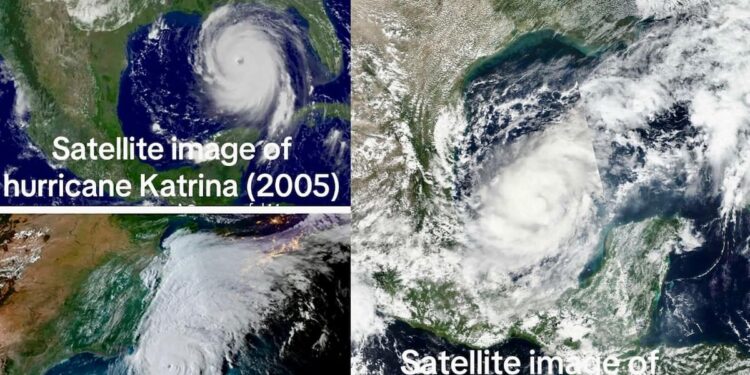The hurricane Milton will make landfall in Florida during the night from Wednesday to Thursday, less than two weeks after the destructive passage of Helene. Although the two hurricanes are similar in strength, they will likely have different impacts. We explain why.
Hurricanes are classified according to the power of their winds. However, this is not the only factor to consider when measuring their dangerousness.
The majority of deaths caused by hurricanes are caused by water and not the force of the winds. Flooding, caused by storm surges, current and maritime accidents are responsible for 90% of deaths during hurricanes.
• Also read: Hurricane “Milton”: See 3D simulations of rising water in Florida
Storm surge
When a hurricane approaches a coast, winds and atmospheric pressure compress ocean water and push it toward land. This is called storm surge.
The hurricane is expected Milton causes a 15-foot-high storm surge to the west coast of Florida. The worst storm surge will likely be south of the hurricane center. According to the estimates of the path of Miltonthis particularly dangerous area could affect a very populated region: Tampa Bay.
• Also read: Here’s how the Tampa Zoo is preparing for the arrival of ‘Milton’
The hurricane Helene caused a storm surge more than 4.5 meters high, as predicted for Milton. The hurricane, however, passed through a less densely populated region of northwest Florida, the Big Bend. In Tampa Bay, Helene caused a smaller storm surge of 2.4 meters.
It was a record for the region, but the National Hurricane Center (NHC) estimates it will be broken by Milton.
Rain
Milton likely to pass through the Florida peninsula quite quickly, which will limit the amount of precipitation over the region. 460 mm of rain is expected, which could cause flooding of less intensity than that caused by Helene.
Helene weakened as it entered land, causing it to slow down over the Appalachian region and the Tennessee Valley. Rainfall of 782 mm was observed in North Carolina, causing catastrophic flooding, such as that which destroyed the village of Asheville.
Winds
When the hurricane Helene made landfall, it was at the peak of its strength, with winds of up to 225 km/h. It was a Category 4 hurricane.
Milton became a category 5 hurricane as it passed over the Gulf of Mexico, with winds of 290 km/h. It has since been downgraded to category 4, reclassified to category 5 before returning to category 4.
Experts expect it to make landfall as a Category 4 or Category 3, with winds of 130 mph.
Even if Milton will not be at its full power as Heleneit will affect more populated regions than the previous hurricane.
Debris from damage caused by Helene could also become dangerous projectiles projected by gusts of Milton.
• Also read: (IN PICTURES) Boarded-up and abandoned neighborhoods: See Florida preparing for Hurricane “Milton”
Katrina
The most destructive hurricane in U.S. history was classified as a Category 3 when it made landfall near New Orleans in 2005, killing nearly 1,300 people.
As Miltonthe hurricane Katrina had also been classified category 5 during its passage over the Gulf of Mexico, a few hours before making landfall.
Their paths are different, but this similarity makes us fear the worst while Milton will make landfall in Florida during the night from Wednesday to Thursday.
– With information from the BBC



